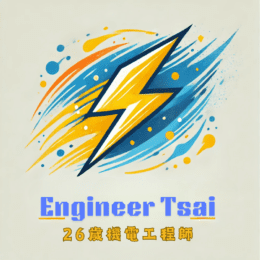▶️ Watch Now: Why Do Inductors Push Back Against Changing Current?
This video breaks down how inductors work in AC systems, from reactance and resonance to real-world uses in motors, air conditioners, and power filters.
From Coil Reactions to Circuit Design: The Inductive Secrets You Need to Know
Once, I was assisting a senior engineer with troubleshooting an old air conditioner. The moment it powered on, the ammeter readings jumped wildly, and the controller kept shutting off.
I was baffled. My mentor glanced at it and said, “The inductor’s going wild — we need to add some damping.”
Back then, I didn’t quite understand. I only knew the unit wasn’t broken, but the erratic current seemed tied to the coil.
Later, I learned what he meant: when an inductor interacts with a capacitor in the circuit, it can create resonance—causing unstable current oscillations.
And “adding damping” simply means inserting resistors or a snubber circuit to dissipate that excess energy and calm the system down.
Chapter 1|What Is Inductance, and Why Does It Matter?
Inductance is a physical phenomenon—it describes how a conductor resists changes in current. This property is quantified as inductance (measured in henries, H).
What we commonly use in circuits is an inductor, a component designed to provide inductance. It’s a passive device, usually made by winding enamel-coated wire into a coil.
When current flows through the inductor, it generates a magnetic field. When the current changes, the magnetic field also changes, which then induces a voltage—this is electromagnetic induction.
In short, inductance “dislikes” sudden current changes. It generates a counter voltage to resist those changes.
This behavior is especially noticeable in AC (alternating current) circuits, where the current is constantly changing—so the inductor constantly “pushes back.”
Chapter 2|How Inductance Affects AC Circuits
In AC circuits, inductors behave differently than in DC.
In a DC circuit, an inductor reacts only at the moment current starts flowing. Once the current stabilizes, it does nothing.
But in AC, where current is continuously changing in direction and magnitude, the inductor continuously induces voltage to resist those changes—effectively hindering current flow.
This form of resistance in AC circuits is called inductive reactance, calculated with the formula:
XL = 2πfL
XL: Inductive reactance (ohms)
f: Frequency (Hz)
L: Inductance (henries)
The takeaway? The higher the frequency, the stronger the inductor resists.
So the same coil will behave very differently in a 50Hz circuit compared to a 1kHz one.
In the first case, it might barely react; in the second, it can feel like an invisible wall.

Chapter 3|The AC Relationship Between Inductors and Capacitors
In AC circuit design, inductors often pair with capacitors. One resists fast current changes (the inductor), while the other resists voltage changes over time (the capacitor). When combined, they create a unique behavior known as resonance.
When inductive reactance and capacitive reactance are equal, the circuit reaches a resonant frequency. At this point, the total impedance drops to its minimum, and current peaks.
Resonant frequency formula:
f = 1 / (2π√LC)
This frequency-selective behavior is crucial in circuits like filters, radios, RF receivers, and power converters. And at the core of it all is the dynamic between inductance and capacitance.
Chapter 4|Practical Applications: Seeing Inductors in Action
Back to the air conditioner we were troubleshooting—although the inductor itself wasn’t faulty, the lack of proper capacitor pairing and voltage regulation caused rapid current shifts during startup. This triggered high-frequency oscillations and tripped the protection system.
Here are some common real-world uses of inductors:
🌀 Start-up coils: Delay current flow during motor or AC compressor startup to establish stable magnetic fields.
🎚️ Filter inductors: Block high-frequency noise in power supplies and maintain voltage stability.
📻 Tuning inductors: Help radios and RF circuits isolate specific frequencies.
⚡ Boost converters: Temporarily store energy and release it to increase voltage output (e.g., LED drivers).
Behind every coil, there’s a logic of “listening to frequencies”—letting the right signals through and blocking unwanted noise.
Chapter 5|Avoiding Inductor Pitfalls in Real-World Design
Unlike resistors, inductors don’t behave in a straightforward way—they vary with frequency, temperature, and surrounding components.
Here are key design tips from the field:
★ Consider the operating frequency: In high-frequency applications, inductance becomes dominant—choose materials and coil styles carefully.
★ Avoid unintended resonance: Poor capacitor-inductor matching can cause voltage instability or ringing.
★ Anticipate start-up behavior: Inductors can cause current surges during motor startup or switching—add surge protection if needed.
★ Ensure proper cooling and insulation: Overheating coils lose reliability and may even short circuit.
As one senior technician once told me:
“Inductors aren’t troublemakers. You just need to know when to let them step in—and when to keep them quiet.”

🔧 Conclusion|Invisible Coils That Shape the Rhythm of Current
Inductors don’t glow. They don’t heat up like resistors. But in the world of current, they quietly shape rhythm and manage energy.
They’re not as straightforward as a switch, yet they silently affect the circuit’s stability and efficiency behind the scenes.
Whether you’re a beginner or preparing to build your first AC power system, understanding inductance will help you design with greater confidence and control.
📌 Further Reading:
🔹 What Is Electricity ? Everything You Need to Know
Before understanding inductance, start with the fundamentals of how electricity behaves.
🔹 Current & Voltage for DIY Enthusiasts : Unlock the Basics
Grasp how changing current and voltage behave in AC circuits to better understand inductive reactance.
🔹 Series vs. Parallel Circuits: What You Need to Know
See how circuit configuration influences impedance and how inductors behave differently in each case.
🔹 Transformer Voltage Step-Up & Step-Down: What You Need To Know
Explore how inductors play a crucial role in electromagnetic winding and voltage transformation.
Have you ever dealt with a coil that “started ringing,” caused tripping, or made odd noises?
Or have you ever designed your own filter inductor or resonance coil in the field?
Feel free to share your story—because real engineering experiences help us all grow.


